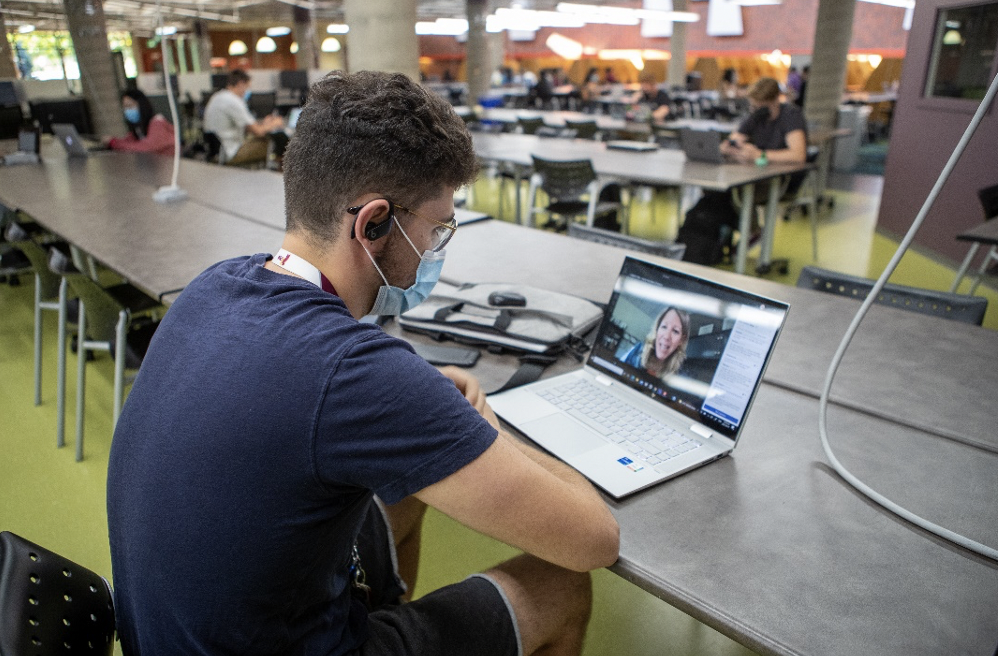Spotlight on SoTL: How to Implement an Engaging Learning SPACE for Online Students?

This article is based on the following research article:
Lal, S., Bayer, I., Yilmaz, Y., & Chan, T. M. (2022). The Productive Engagement SPACE: A Guide to Improve Critical Learner Interactions in e-Learning Environments. Journal of Graduate Medical Education, 14(2), 149-154. Doi: https://doi.org/10.4300/JGME-D-21-00818.1
What did the pandemic teach educators about the best practices of post-secondary online education? An article by three career educators and one clinician educator, Faculty of Health Sciences, McMaster University, presents the Social & Personal – Activity & Assessment – Digital Corridor – Education Delivery (SPACE) framework to guide the future design and implementation of online learning experiences that foster productive engagement.
What did the researchers do and find?
The authors developed the SPACE framework by considering three learner interactions, i.e., Learner-Learner, Learner-Material, and Learner-Educator, across four key aspects of learning environments: connectivity, productivity, accessibility, and learning place. The SPACE framework was a result of the authors’ intentional and thoughtful reflection on their experiences teaching graduate medical students at McMaster University during the pandemic, which was then refined through end-user feedback, including trainees, clinical teachers, and faculty developers at McMaster and beyond.
How might you use this research in your teaching?
The SPACE framework was proposed to act as the building blocks for the development of online learning environments by incorporating existing in-person learning experiences into online learning. The following are ideas adopted from the article on how to implement the SPACE framework into your next online learning environment:
- Create Social & Personal Connection Opportunities: Include social time into your synchronous class schedule (e.g., a five-minute informal chat with your students) and offer virtual office hours to allow for interactions with students.
- Use Synchronous and/or Asynchronous Activities and Assessments: Assess student learning as you go. This can be achieved by including frequent formative assessments and activities that pair with the learning objectives of your course.
- Mimic Between-Class Conversations in a Digital Corridor: Ask your students to join a digital messaging platform to communicate and collaborate. For example, in MS Teams workspace you can create work/life-related channels, such as #life-and-social and #need-help. Consider creating a messaging group for faculty members as well.
- Align Learning Content with Education Delivery Method: For synchronous sessions, video conferencing tools (e.g., Zoom and MS Teams) can be used. The synchronous delivery tool can be selected based on factors, such as class size, ability to screen share, or ability to facilitate discussions. For asynchronous sessions, Learning Management Systems (e.g., McMaster’s Avenue to Learn), and social media can be used to facilitate online discussions. Educators can use previously recorded content as well, and they are encouraged to select content from prior digital scholarship rather than starting from scratch.
Consider using the SPACE Audit Tool (see Figure 2 in the linked article here) to help you assess online learning experiences.
Stay tuned for the next Spotlight on SoTL coming to the MacPherson Memo on November 1, 2023
Spotlight on SOTL
